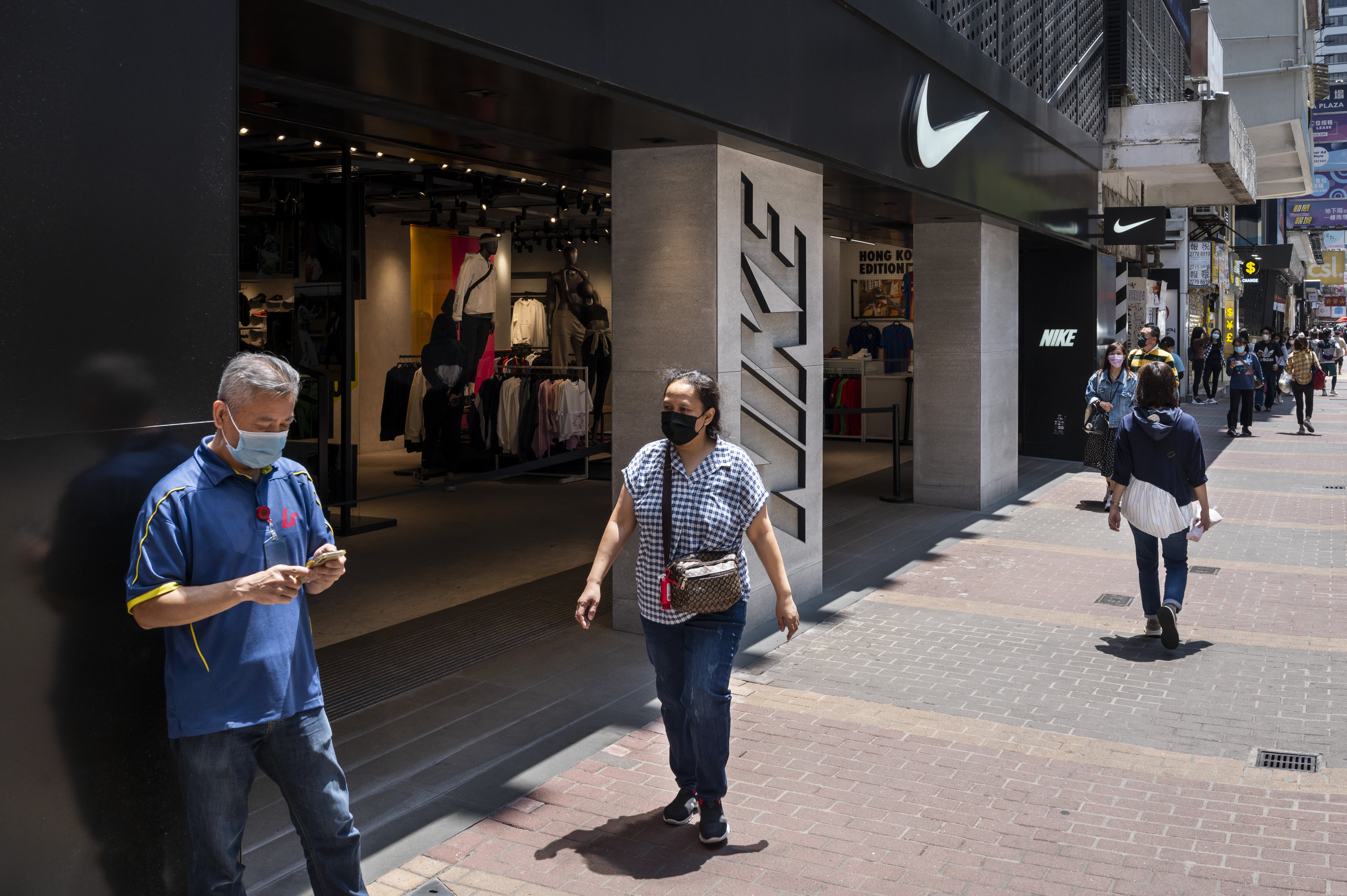Nike shares fall as supply chain havoc leads retailer to slash revenue forecast

Pedestrians walk past the American multinational sport clothing brand, Nike store and its logo seen in Hong Kong.
Budrul Chukrut | LightRocket | Getty Images
Nike shares dropped in extended trading Thursday after the sneaker giant said supply chain congestion is hurting the business more than it previously anticipated.
The sneaker giant lowered its fiscal 2022 outlook to account for longer transit times, labor shortages and prolonged production shutdowns in Vietnam.
It now expects full-year sales to increase mid-single digits, compared with a prior outlook of low-double digit growth. In the fiscal second quarter, it sees sales flat to down low-single digits.
For the next few quarters, Nike anticipates all of its geographies to be impacted by short-term inventory shortages, Chief Financial Officer Matt Friend said during a conference call.
Nike’s stock was recently down more than 3%.
Here’s how Nike did during its fiscal first quarter compared with what Wall Street was expecting, based on a survey of analysts by Refinitiv:
- Earnings per share: $1.16 vs. $1.11 expected
- Revenue: $12.25 billion vs. $12.46 billion expected
Net income for the three-month period ended Aug. 31 grew to $1.87 billion, or $1.16 per share, compared with $1.52 billion, or 95 cents per share, a year earlier. That topped analysts’ expectations for $1.11 a share.
Sales climbed to $12.25 billion from $10.59 billion a year earlier. That was short of expectations for $12.46 billion.
Sales in Greater China were up 11%, the smallest increase of its geographies. The region had been one of Nike’s biggest revenue drivers in quarters past.
Revenue in North America rose 15% to $4.88 billion. That was short of the $5.05 billion that analysts polled by FactSet were looking for.
Digital sales for the Nike brand rose 29% year over year. The retailer has been investing in its website and a suite of mobile apps. That has been especially beneficial during the health crisis, when many people have opted to shop from their homes.
But Nike has faced other challenges, which could impact its future performance. Since mid-July, the company has been working through factory shutdowns in Vietnam, where it produces roughly 50% of its footwear and 30% of its apparel.
Analysts and investors have been expecting sales to take a temporary hit from the drop-off in manufacturing. Facilities are still not yet fully up and running. To be sure, the lockdowns are impacting a number of other retailers, ranging from athleisure rival Lululemon to the high-end furniture chain RH.
Wall Street research firm BTIG earlier this month had downgraded Nike’s stock, seeing order cancellations running through at least next spring.
Nike said it ended the latest quarter with inventories of $6.7 billion, which was about flat from a year earlier, and down slightly from inventories of $6.9 billion in the prior period.
The company said its in-transit inventories, meaning goods en route to warehouses, were up due to extended lead times from ongoing supply chain disruptions.
Nike shares are up about 13% year to date, as of Thursday’s market close, but down about 9% from an all-time high reached in early August. The company has a market cap of $252.6 billion.
Find the full press release from Nike here.




